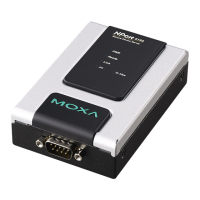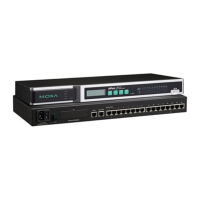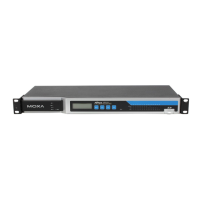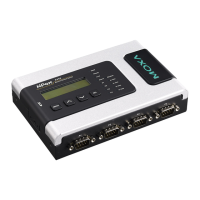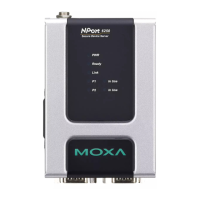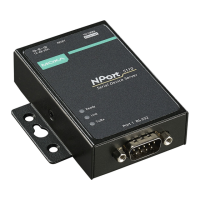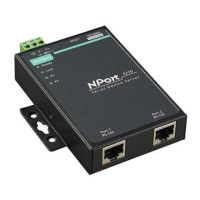NPort 6000 Series Introducing Serial Port Operation Modes
Terminal ASCII Mode
Terminal ASCII mode can handle up to 8 sessions per port with the ability to switch between sessions on the
same terminal. This mode is used for text-based terminals with no file-transfer capability or encryption.
Terminal BIN Mode
Terminal BIN mode allows one session per port and is used for terminal applications that include file-transfer
features.
SSH Mode
SSH mode allows one session per port and is used for secure terminal applications that abide by the SSH
protocol.
Reverse Terminal Applications
Reverse terminal applications are similar to terminal applications in that they involve using the NPort 6000 to
manage the connection between a terminal and a server. The difference is that with reverse terminal
applications, the terminal is connected through the network and the server is connected through the serial port,
rather than the other way around. In practice, a reverse terminal session typically involves a network
administrator telnetting to a device that has a dedicated serial console port used specifically for configuration
purposes.
For example, many routers, switches, UPS units, and other devices (including the NPort 6000) have
Console/AUX or COM ports to which a terminal can be physically connected for console management. With the
NPort 6000, the device’s console port can be connected to a serial port on the NPort 6000, allowing a network
administrator to telnet to the device remotely through the network. Although modern network equipment
generally allows other options for remote configuration through the network, there are situations in which it is
necessary or desirable to configure a device by serial console (e.g., for security reasons, when using
older-generation equipment, or as a backup configuration method when the network is down).
